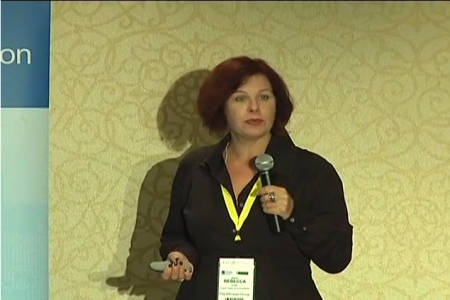“It’s more of a dialog than it is broadcasting and… this is more about slow and steady wins the race.”
Social media is content marketing. Advertising is buying media. Content is the difference between advertising and publishing. When you engage in content marketing, you’re a publisher or even a broadcaster.
One method of gaining metrics for content marketers is to measure what publishers measure. That is, measure pageviews, time spent on page, top stories, number of subscribers, and ad sales.
These are not the whole story. The question becomes one of “What are you trying to achieve?” To illustrate the difference between companies, Lieb gives the following two examples:
1. Pepsi Refresh: They asked users to nominate charitable projects for Pepsi to support. Pepsi measured very soft metrics: How many mentions of Pepsi Refresh project and sentiment analysis – were people happy or not? This is very general, and has some flaws.
2. Eloqua gives away marketing guides such as the “Real World Marketing Syllabus,” but they require registration to get this free ebook. They define a qualified lead as anyone with the rank VP or above. This is quite specific, but may miss people who are qualified to make marketing purchasing decisions whose title is ‘less’ than VP. However, it is easy to see how many of those who download the book and meet the criteria begin the sales process.
In short, marketers need to figure out what they want to measure, and why they want to measure it.
Lieb gives the following list of common measurements:
- Subscribers
- Fans
- Likes
- SEO (visibility, ranking, as traffic source)
- Leads (quality, lifetime value, customers referred by existing leads)
- Sales (volume, dollar value, length of sales cycle
- Traffic
- Conversions (Sales, subscribers, leads)
- User/lead/sales acquisition costs. Does your content marketing lower the cost of the sales or acquisition cycle?
She explains the value of each of these measures, but also the difficulty in measuring each one. For example, even a so-called hard measure like Sales might only be a measure of someone entering the sales cycle.
One approach is to assign a dollar value, meaning to average the cost of everything that goes into each KPI (Key Performance Indicator). By boosting content, the cost per KPI might go down, and this is something that can be measured.
Another way to measure is the “Measurement Compass” by Susan Ettinger, which sets six business goals for social media marketing. These goals can obviously be extended to content marketing.
- Innovation
- Brand Health
- Marketing Optimization
- Revenue Generation
- Operational Efficiency
- Customer Experience
These are softer measures. For example, innovation measures how consumers are interacting with the brand to help improve the product. Content can be used to float ideas to see if a larger campaign is on target.
There are social data challenges: In the Pepsi Refresh analysis, the software that analyzes sentiment can be wrong. Sometimes “this is so bad” means “this is so good.” Soft content metrics can be taken as proxies for real hard metrics. Sometimes measuring hard metrics is more activity or busy-work than measurement. On the other hand, these measures are an indicator of resonance. After you’ve defined everything and decided what the content is trying to achieve, be sure to define what conversion is and discover where it is coming from.
Lieb’s parting advice is to be patient and remember that content marketing is about developing a dialog between the marketer and the customer.
Rebecca Lieb – Digital Advertising/Media Analyst, Altimeter Group
 Rebecca Lieb is globally recognized as an expert on digital marketing, advertising, publishing and media. A consultant, author, and speaker, she’s the former VP of Econsultancy’s US operations. She was VP and editor-in-chief of The ClickZ Network for over seven years. For a portion of that time, Rebecca also ran Search Engine Watch. She consults on content strategy for a variety of brands and professional trade organizations.
Rebecca Lieb is globally recognized as an expert on digital marketing, advertising, publishing and media. A consultant, author, and speaker, she’s the former VP of Econsultancy’s US operations. She was VP and editor-in-chief of The ClickZ Network for over seven years. For a portion of that time, Rebecca also ran Search Engine Watch. She consults on content strategy for a variety of brands and professional trade organizations.
She also wrote the best-selling The Truth About Search Engine Optimization. Rebecca has held executive marketing positions at strategic e-services consultancies, including Siegel+Gale, and has worked in the same capacity for global media companies including Universal Television & Networks Group and Bertelsmann’s RTL Television. As a journalist, she’s written on media for numerous publications, including The New York Times, The Wall Street Journal and Advertising Age. Until recently, Rebecca taught at New York University’s Center for Publishing.

